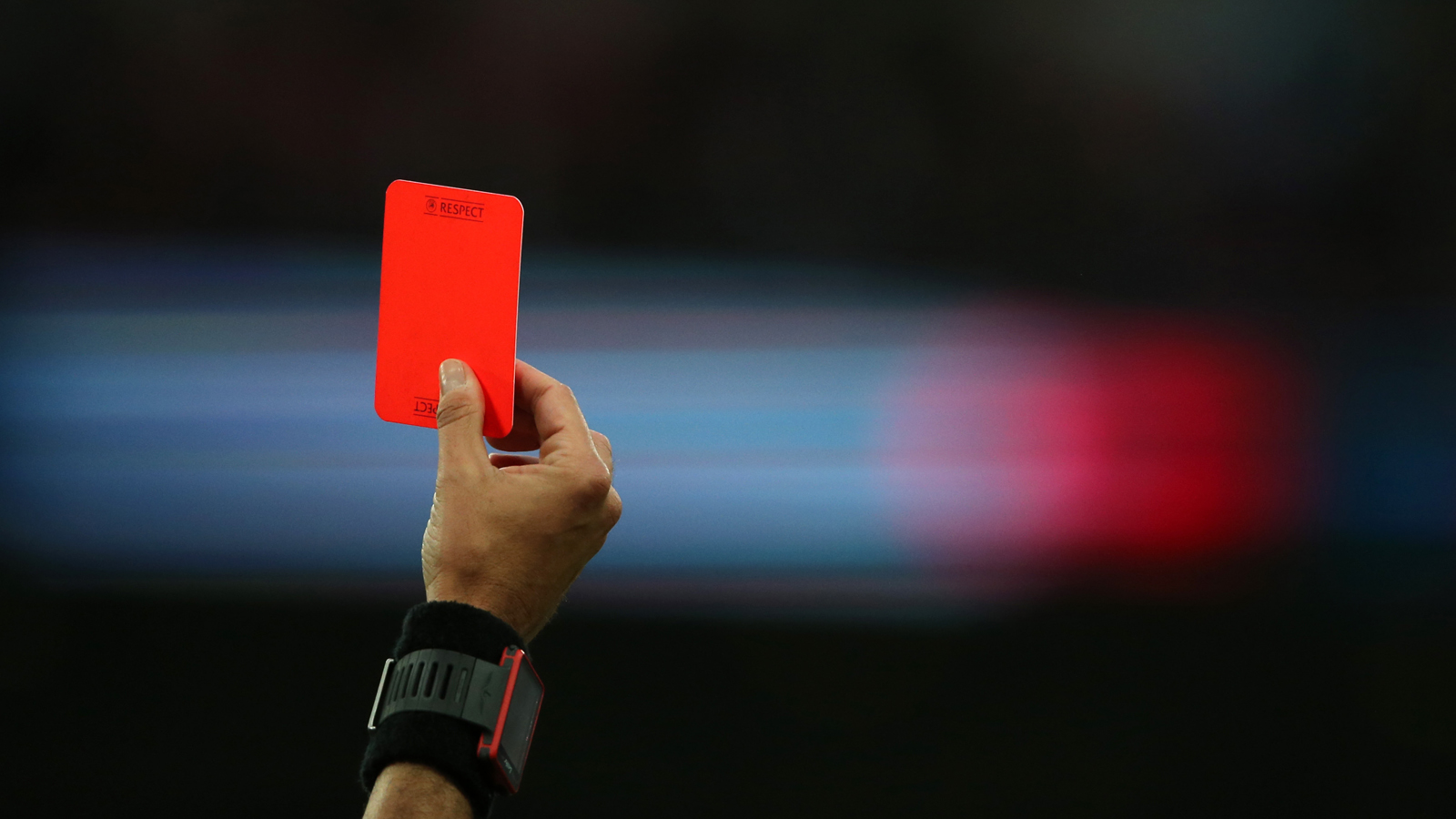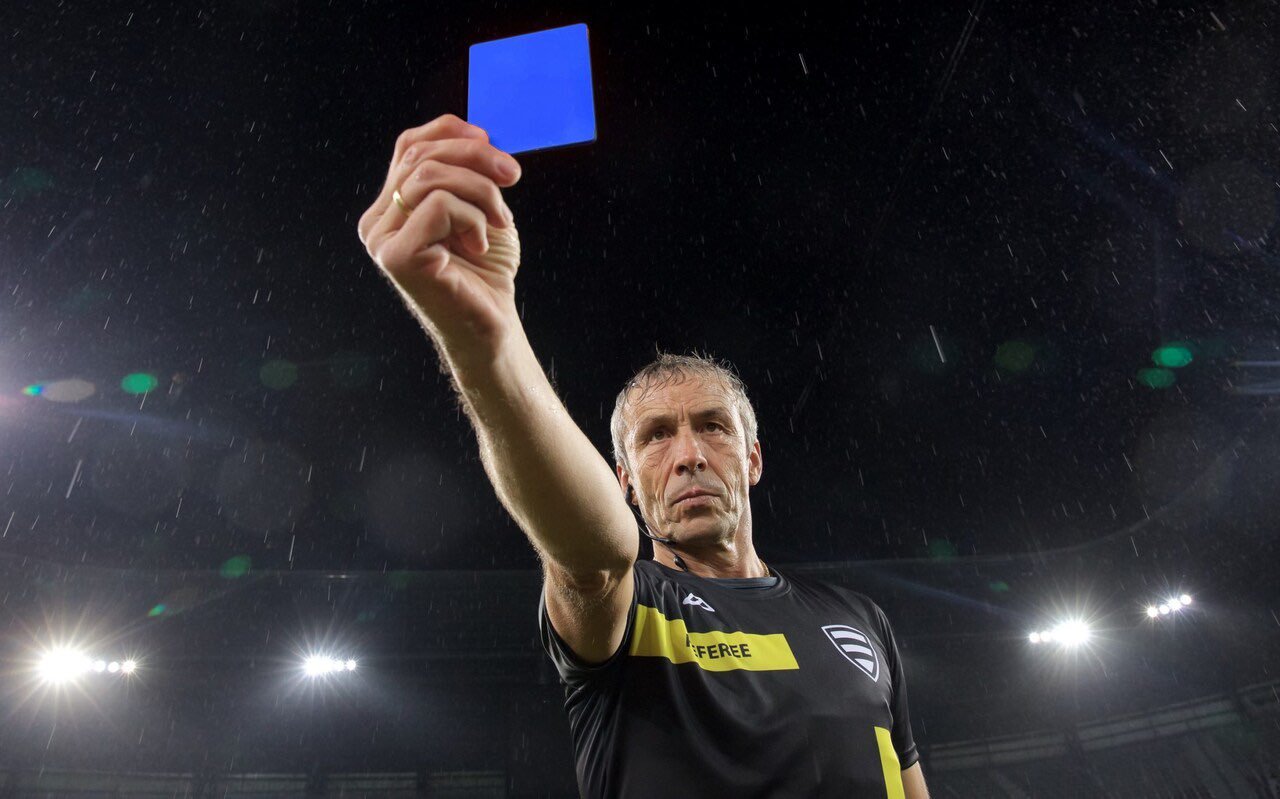- The world of football is buzzing with talk of a bold new addition to the referee’s toolkit
- The blue card was introduced in hockey years ago
- IFAB will monitor the new idea
The world of football is buzzing with talk of a bold new addition to the referee’s toolkit: the blue card football when does it start? The implementation of blue cards was announced by the International Football Association Board (IFAB) on Friday, February 8.
IFAB will monitor the new idea, which is being used locally to deal with dissent but may also be expanded to include cynical fouls. But what exactly is this mysterious blue rectangle, and when can we expect to see it flashing on the pitch? We explain how the blue cards will be utilized and the potential impact on the current system, even if a similar idea is already present in hockey as part of the sin-bin.
WHAT IS THE BLUE CARD IN FOOTBALL RULES?
In understanding blue card football when does it start and its rules, you must understand first how the current system of yellow and red cards work. The degree of the infraction or violation of the code or foul currently determines which card a player gets.
When a player disrupts the flow of play when the opposing team is in control of the game or dissents from a non-serious foul, they are given a yellow card. A player may also be booked with a yellow card for several other infractions. Such as taking off their t-shirt without permission or celebrating too much after scoring a goal. But even after being given a yellow card, a player continues to play.

A red card. Photo/Matthew Ashton – AMA/Getty Images)
Subsequently, a player gets a red card if they commits a major foul results in injury denied a clear chance to score. Also a player receives a red card if he/she engages in violent behaviour, such as spitting at an opponent or physically abusing a player, fan, or ball boy.
If the player obtains a second yellow card in the same match, a red card is also given. Referees additionally have the authority to show red cards in circumstances they deem to be more serious than those listed above. The player in question is given a red card, which means they are no longer permitted to sit on the bench and must leave the field.
WHAT IS THE BLUE CARD IN FOOTBALL RULES?
With the understanding of the circumstances that lead to the issuance of a red and yellow card, you are in the right direction in grasping blue card system. So, where does the blue card come in before we dig into blue card football when does it start? This proposed card by IFAB will be issued where a player displays disobedience on the pitch. Consequently, after an incident that is significant but falls outside the scope of a second yellow card which ideally warrants a red card.
The player will be punished with a 10-minute suspension for this, and after serving his time, he will return to the pitch. Right now, this system is comparable to hockey’s sin-bin, where players receive green, yellow, and red cards, respectively. They are given timeouts of two, five, and ten minutes.
BLUE CARD FOOTBALL WHEN DOES IT START?
Unlike the familiar yellow and red cards, the blue card hasn’t officially entered the international rulebook yet. However, trials are underway at the grassroots level, specifically aimed at addressing cynical fouls and dissent towards referees. Currently, these situations often fall in a grey area between a yellow and a red card, leaving referees with a limited range of options.
WHAT SPORTS USES A BLUE CARD?

A blue card. Photo/Medium
While not yet mainstream in football, the blue card concept isn’t entirely new. Hockey has been utilizing a blue card system for decades, functioning as a 10-minute misconduct penalty. This penalty isn’t as severe as a full-game ejection. It allows referees to address minor infractions without resorting to harsher measures. Generally, it addresses a grey area between the second yellow card and the red card. Therefore; there is huge anticipation about blue card football when does it start.
WHEN SHOULD A RED CARD BE GIVEN?
The red card remains the ultimate disciplinary tool in football, reserved for serious offences. They include violent conduct, deliberate handball denying a goalscoring opportunity, and receiving two yellow cards. However, the introduction of the blue card wouldn’t alter the existing guidelines for red cards rather, it offers an additional level of control for referees.
WHAT IS THE FOUL RULE IN FOOTBALL?
A foul in football is any action deemed unsporting or dangerous, potentially putting an opponent at risk or gaining an unfair advantage. Referees judge the severity of the foul and award appropriate disciplinary measures, ranging from free kicks and penalty kicks to yellow or red cards.
CONCLUSION
Red and yellow cards remain the biggest punitive measures in football. However, Football Association (FA) reports that since blue cards were largely implemented in 2018, there has been a 38% decrease in dissent cases. Players’ on-field discipline toward referees and rival players improved greatly which justifies blue card football when does it start query.
















You must be logged in to post a comment Login